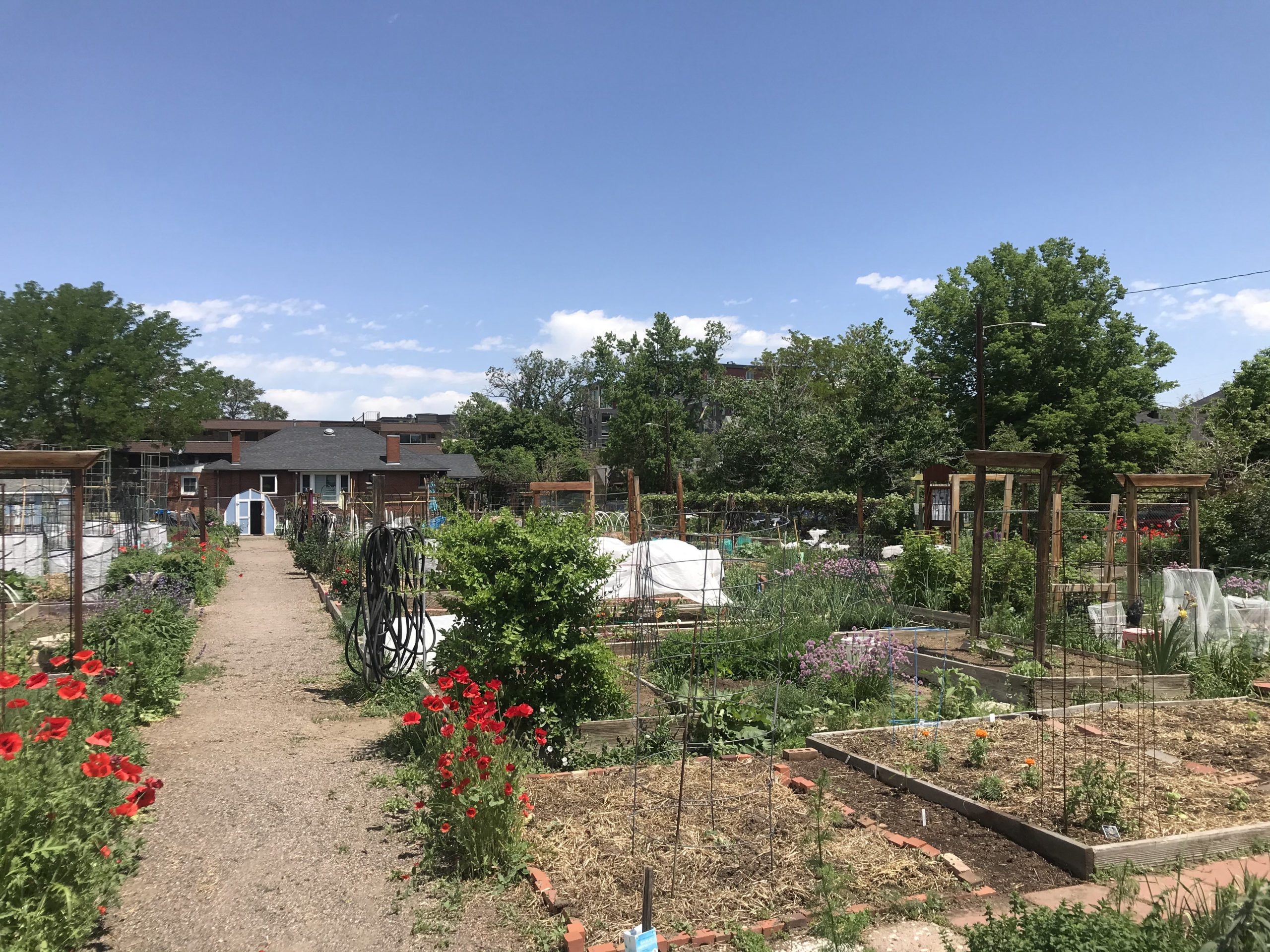by Senior Education Specialist Judy Elliott
July is one of the hottest months in Denver, with temperatures ranging from the mid to high 90s during the daytime to lows in the 60s at nights. There are some years in which we are lucky enough to receive a bit of moisture from monsoon rains, but this is a sporadic occurrence. Humidity is generally very low, making it seem ‘hot and dry’ throughout the month.
Additionally, daylight hours, after the vernal equinox in June are decreasing, with a loss of about 45 minutes from the beginning to the end of July. Since plants use sunlight, with the process of photosynthesis to produce food in the form of sugars and starches, that accumulate in the leaves, they begin to react to light changes in many ways. Some exhibit signs of stress by sending up seed -stalks, signaling the end of their lives, others send out chemical signals that seem to magically attract pest insects, others slow down their growth and seem more prone to diseases.
This is a month of transition, providing moments of reflection that allow us to evaluate our current garden plan, proactively plan for renewal of soil and spirit, and actively learn from our environment.
L |Leap into learning
- Learn about the life cycles of both pest and beneficial insects. Many insects lay their eggs on the undersides of leaves where conditions are cooler.
- Become familiar with a comprehensive guide to insect identification written by Colorado’s retired state entomologist: ‘Garden Insects of North America: The Ultimate Guide to Backyard Bugs’
E| Evaluate your current plantings and soil conditions
- Realize that all plants have a life cycle, seed to maturity, and respect their needs.
- Replace cool-season crops such as salad greens, peas, and radish with beans
- Consider planting one more summer squash seed to provide strong growth that may resist late-season diseases
- Renew straw or leaf mulch as needed to prevent erosion, soil compaction, and lessen the effects of diseases. Remove lower leaves & secondary stems from tomato plants so no branches or leaves touch the soil surface.
- Water that splashes onto lower leaves which may be showing leaf spots or other signs of disease can transmit diseases to the foliage above.
A | Arm yourself with strategies that allow your plants to survive in the heat
- Keep plants growing actively with sufficient leaf cover to prevent ‘sunscald’ of unprotected fruit
- Use kelp (liquid seaweed) either as a foliar (leaf) spray or soil drench to provide a supply of micronutrients to stressed plants
- Space warm-season crops such as squash far enough apart so that mature leaves act as a ‘living mulch’, shading the root zone.
R | Replant crops that are no longer productive + renew the soil
- As peas become unproductive, cut off vines at soil level & leave their roots in the soil to feed the microorganisms. The vines can either be chopped & used in the compost pile or left around crops as a mulch
- Plant a second crop of beans in place of salad greens and radishes that were removed. Beans, such as peas, add nitrogen to the soil
- Plant summer cover crops, such as buckwheat, that are a haven for beneficial insects and promote soil health. Before they ‘set seed’, cut stalks down at ground level, leaving roots in the soil
- ‘Top dress’ all crops with handfuls of landscape-based compost, lightly cultivating it into the soil at the base of plants
N | Nourish your spirit by slowing down and creating peaceful places of reflection
- Bring in a bale of straw or old chair to create a peaceful place that encourages you to visit more frequently
- Add artistic touches (painted rocks as plant markers, colorful flowers, unusual trellises, or growing containers) that feed your soul
Do remember that gardening is a process, not a race, not a contest. Your role is to nurture, give back and, hopefully not repeat the same mistake each year.
Quick Garden Tips
- Consider the use of ‘shadecloth’ over your tomato cages for a few hours during the heat of the day. Shadecloth is permeable to light and water but a strategy that aims to limit the burning effects of late afternoon sun intensity. The cloth can be attached to tomato cages with clothespins
- Handpick Japanese beetles in the early morning hours, when they are more sluggish, and drown them in buckets of soapy water. They are also a preferred culinary delight for chickens!

